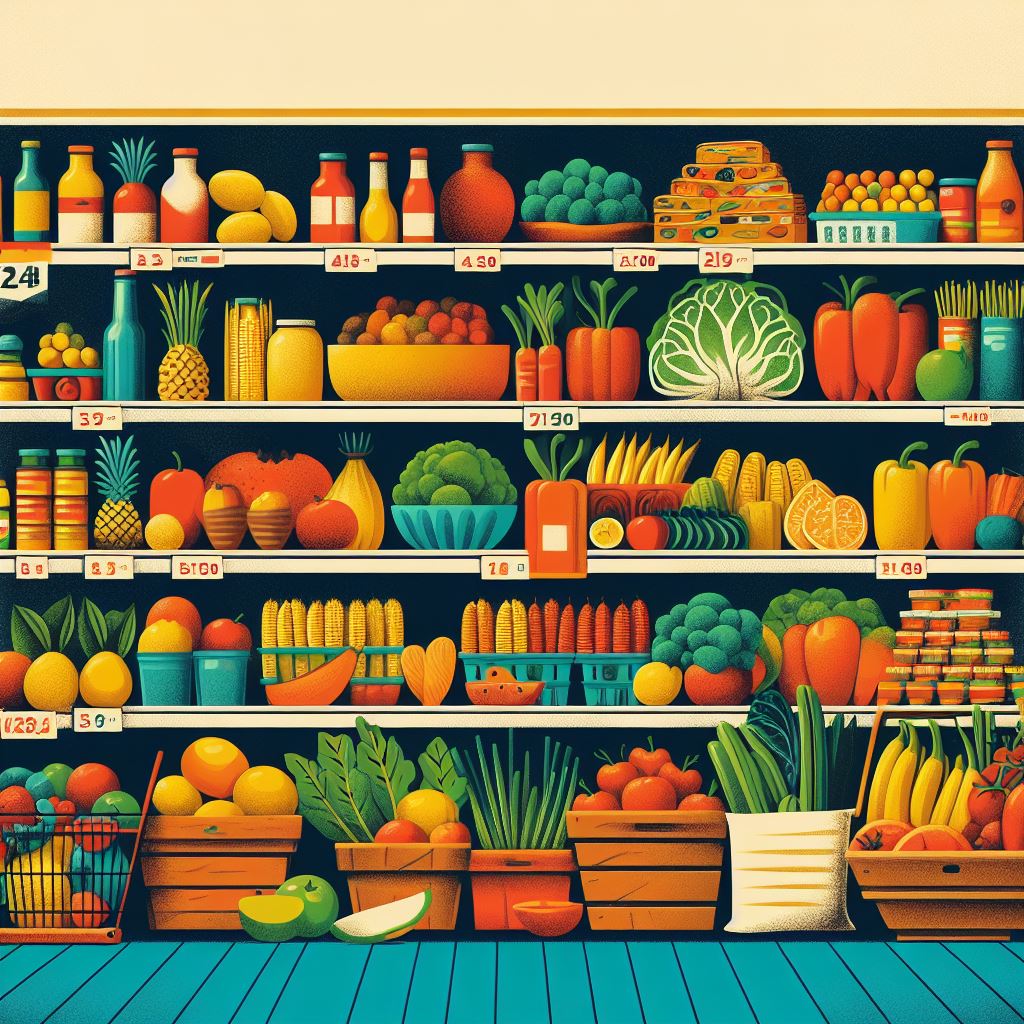Healthy Choices on a Food Stamp Budget

You can make healthy choices even on a tight food stamp budget. Contrary to popular belief, eating well doesn’t have to break the bank. By understanding your food stamp benefits and budgeting wisely, you can prioritize nutritious ingredients and maximize your options for fresh produce and smart protein choices.
With some planning and preparation, you can enjoy delicious, balanced meals that nourish your body without straining your wallet. It’s time to take control of your health and make the most of your food stamp budget.
Key Takeaways
- Prioritize affordable and versatile nutrient-dense foods like beans, lentils, whole grains, and frozen fruits and vegetables.
- Maximize fresh produce options by prioritizing seasonal fruits and vegetables and considering frozen and canned alternatives.
- Choose affordable and nutritious protein sources such as eggs, canned tuna, lentils, and peanut butter.
- Plan and prepare healthy meals by creating a weekly meal plan, making a shopping list, and considering batch cooking and freezing leftovers.
Understanding Food Stamp Benefits
Understanding food stamp benefits can help you make informed decisions about your grocery shopping. Food stamps, officially known as the Supplemental Nutrition Assistance Program (SNAP), is a federal assistance program that provides eligible low-income individuals and families with funds to purchase food. The benefits are issued on an Electronic Benefit Transfer (EBT) card, which works like a debit card at authorized retailers.
To qualify for food stamp benefits, you must meet certain income and asset requirements. The amount of benefits you receive is based on your household size, income, and expenses. It’s important to note that food stamp benefits can’t be used to purchase non-food items such as alcohol, tobacco, or household supplies.
Understanding the benefits can help you plan your grocery shopping more effectively. By knowing the amount of benefits you receive, you can create a budget and prioritize your purchases. It’s also important to learn about eligible food items that can be purchased with food stamps, such as fruits, vegetables, bread, dairy products, and meat. Making healthy choices within your budget is possible.
Additionally, understanding the rules and regulations of the program can help you avoid any potential misuse or penalties. It’s crucial to use your benefits responsibly and within the guidelines set by the program.
Budgeting for Nutritious Ingredients
To make healthy choices on a food stamp budget, you can budget for nutritious ingredients by carefully planning your grocery list. By being strategic with your choices and making informed decisions, you can ensure that you’re getting the most out of your limited budget.
Start by prioritizing nutrient-dense foods that are affordable and versatile, such as beans, lentils, whole grains, and frozen fruits and vegetables.
When planning your meals, consider incorporating ingredients that can be used in multiple dishes. For example, a bag of brown rice can be used as a base for stir-fries, grain bowls, or as a side dish. Canned tomatoes can be used in soups, sauces, or stews. This way, you can stretch your budget while still enjoying a variety of nutritious meals.
Another tip is to buy in bulk whenever possible. Many stores offer discounts on larger quantities of items like rice, beans, and oats. By buying in bulk, you can save money in the long run and have a steady supply of staple ingredients that can be used in various recipes.
Lastly, take advantage of sales and discounts. Keep an eye out for weekly specials and consider using coupons to further reduce your grocery expenses. With careful planning and a little creativity, you can stretch your food stamp budget while still nourishing yourself with nutritious ingredients.
Maximizing Fresh Produce Options
One way to maximize your fresh produce options on a food stamp budget is by prioritizing seasonal fruits and vegetables. Choosing produce that’s in season not only ensures better flavor and quality, but it also tends to be more affordable. Seasonal produce is often locally sourced, reducing transportation costs, which can drive up prices. Additionally, seasonal fruits and vegetables are usually abundant, leading to lower prices due to increased supply.
To identify what produce is in season, you can refer to online resources or consult with local farmers or grocers. These sources can provide valuable information on what fruits and vegetables are currently in season in your area. By focusing on seasonal options, you can stretch your food stamp budget further and have access to a wider variety of fresh and nutritious produce.
It’s important to note that frozen and canned fruits and vegetables can also be viable alternatives when fresh produce isn’t available or affordable. These options are often processed at their peak, locking in nutrients and providing a cost-effective way to include fruits and vegetables in your diet.
Making Smart Protein Choices
To continue maximizing your food stamp budget, prioritize making smart protein choices that are both affordable and nutritious. Protein is an essential nutrient that helps build and repair tissues, supports a healthy immune system, and provides energy. However, it can be challenging to find affordable protein sources when you are on a limited budget.
Here is a table that provides a comparison of different sources of protein in terms of cost and nutrition:
| Protein Source | Cost per Serving | Protein per Serving (grams) | Cost per Gram of Protein |
|---|---|---|---|
| Eggs | $0.10 | 6 | $0.02 |
| Canned Tuna | $0.60 | 20 | $0.03 |
| Lentils | $0.10 | 9 | $0.01 |
| Peanut Butter | $0.10 | 8 | $0.01 |
As you can see from the table, eggs, canned tuna, lentils, and peanut butter are all affordable protein options. They offer a good amount of protein per serving at a low cost. Eggs, in particular, are an excellent choice as they are not only affordable but also rich in essential nutrients like vitamins A and B12. Canned tuna is another great option as it is a good source of omega-3 fatty acids, which support heart health. Lentils and peanut butter are also economical choices, and they provide a good amount of protein along with fiber, vitamins, and minerals.
Planning and Preparing Healthy Meals
Maximize your food stamp budget by prioritizing the planning and preparation of nutritious meals. By carefully considering your options and making smart choices, you can stretch your dollars while still providing your family with healthy and satisfying meals.
Start by creating a weekly meal plan based on the foods that are currently on sale or in season. This will help you take advantage of the best deals and ensure that you have a variety of nutritious options on hand. Be sure to include plenty of fruits, vegetables, whole grains, and lean proteins in your plan.
Once you have your meal plan in place, make a shopping list and stick to it. Avoid impulse purchases and stick to buying only the items you need for your planned meals. This will help you stay on budget and prevent food waste.
When it comes to meal preparation, consider batch cooking. Cook larger quantities of meals and freeze the leftovers for future use. This not only saves you time but also ensures that you always have a healthy meal option available, even on busy days.
Frequently Asked Questions
Are There Any Restrictions on the Types of Food That Can Be Purchased With Food Stamps?
Yes, there are restrictions on the types of food that can be purchased with food stamps. These restrictions aim to promote healthier choices and exclude items like alcohol, tobacco, and hot prepared foods.
How Can I Make Sure I’m Getting Enough Nutrients on a Limited Food Stamp Budget?
How can you get enough nutrients on a limited food stamp budget? Make smart choices by focusing on nutrient-dense foods like fruits, vegetables, whole grains, and lean proteins. Plan meals, compare prices, and use coupons to stretch your budget.
Are There Any Resources Available to Help Me Find Affordable and Healthy Recipes?
Are there resources to help you find affordable and healthy recipes? Yes, there are many websites and apps that offer budget-friendly recipes. They provide options for nutritious meals that fit within your food stamp budget.
What Are Some Strategies for Stretching My Food Stamp Budget to Afford More Fresh Produce?
To stretch your food stamp budget for more fresh produce, try these strategies: compare prices at different stores, buy in-season fruits and vegetables, use coupons and sales, and consider frozen or canned options.
How Can I Incorporate More Plant-Based Protein Options Into My Meals While on a Food Stamp Budget?
You can incorporate more plant-based protein options into your meals on a food stamp budget by choosing affordable sources like beans, lentils, tofu, and canned vegetables. These options are nutritious and budget-friendly.



